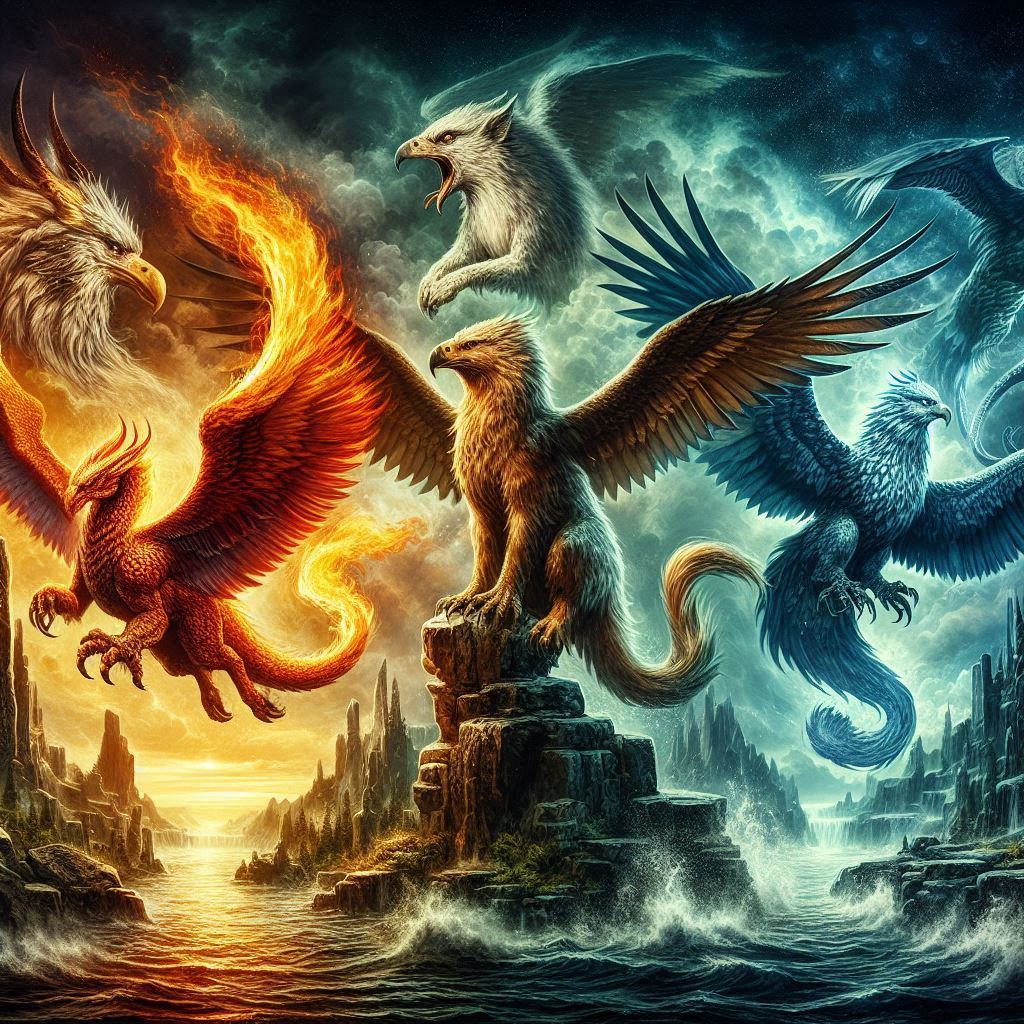
Legendary Beasts in Mythology: Dragons, Griffins, and More
Karl FinnbogasonShare
Throughout history, mythology has been filled with awe-inspiring creatures that symbolize power, mystery, and the unknown. From fire-breathing dragons to majestic griffins, these legendary beasts have captured the imagination of cultures across the world. These mythical beings were often seen as guardians, symbols of divine power, or harbingers of destruction. Their influence remains strong in literature, film, fashion, and even modern storytelling.
Let’s explore some of the most famous legendary beasts and their significance across different mythologies.
1. Dragons: The Eternal Symbols of Power and Chaos
Few mythical creatures are as universally recognized as dragons. These massive, often winged reptiles appear in myths from Europe to Asia, representing different concepts such as wisdom, destruction, or protection.
Western Dragons (European Mythology)
Western dragons, often depicted as fierce, fire-breathing creatures, were common in medieval European legends. They were seen as adversaries to be conquered, often guarding treasure or terrorizing villages.
- Famous Example: St. George and the Dragon – A popular medieval tale where St. George slays a dragon to save a princess.
- Symbolism: Greed, destruction, chaos, and sometimes protection.
Eastern Dragons (Chinese Mythology)
Unlike their Western counterparts, Chinese dragons are revered as wise, benevolent beings that control the weather and bring good fortune.
- Famous Example: The Yellow Dragon – A divine creature associated with the emperor and wisdom.
- Symbolism: Prosperity, strength, and imperial power.
2. Griffins: The Guardians of Gold
A griffin is a mythical creature with the body of a lion and the head and wings of an eagle. In various cultures, griffins were seen as protectors of treasures and sacred places.
- Origins: The griffin’s mythology can be traced to Ancient Persia, Egypt, and Greece.
- Symbolism: Nobility, strength, and vigilance.
- Famous Example: The Griffin of Greek mythology was said to guard the gold mines of Scythia.
Griffins often appeared in heraldry and coats of arms, symbolizing courage and leadership.
3. The Phoenix: The Firebird of Rebirth
The phoenix is a legendary bird associated with fire and rebirth. It is said to live for centuries before bursting into flames and being reborn from its ashes.
- Origins: Found in Egyptian, Greek, and Roman mythology.
- Symbolism: Immortality, renewal, and transformation.
- Famous Example: The Bennu bird from Egyptian mythology, considered the inspiration for the phoenix legend.
The phoenix remains a powerful symbol in modern culture, representing resilience and the ability to overcome hardships.
4. The Kraken: The Terror of the Sea
The Kraken is a legendary sea monster of Norse and Scandinavian mythology, often described as a massive squid or octopus capable of sinking entire ships.
- Origins: Norse and Scandinavian folklore.
- Symbolism: The unknown, deep-sea dangers, and uncontrollable forces of nature.
- Famous Example: Many sailors’ tales depicted the Kraken as a real threat, influencing modern depictions in movies and books, such as Pirates of the Caribbean.
5. The Minotaur: The Beast of the Labyrinth
The Minotaur is a creature from Greek mythology, described as a being with the body of a man and the head of a bull. It was imprisoned in the Labyrinth by King Minos and was eventually slain by the hero Theseus.
- Origins: Greek mythology.
- Symbolism: Power, violence, and imprisonment.
- Famous Example: The tale of Theseus and the Minotaur, where the hero uses intelligence and strength to defeat the beast.
The Minotaur represents the struggle between civilization and primal instincts and has been depicted in numerous books, films, and artworks.
6. Cerberus: The Guardian of the Underworld
Cerberus is the three-headed dog from Greek mythology, known for guarding the entrance to Hades and preventing the dead from escaping.
- Origins: Greek and Roman mythology.
- Symbolism: Guardianship, loyalty, and the afterlife.
- Famous Example: Cerberus appears in the myth of Hercules’ Twelve Labors, where he was tasked with capturing the beast.
7. Chimeras: The Monsters of Greek Mythology
A chimera is a fire-breathing creature from Greek mythology with the body of a lion, the head of a goat emerging from its back, and a serpent’s tail.
- Origins: Greek mythology.
- Symbolism: Chaos, fear, and hybrid strength.
- Famous Example: The Chimera in Homer’s Iliad, slain by the hero Bellerophon.
The Influence of Legendary Beasts in Modern Culture
Even today, these mythical creatures continue to inspire films, literature, and fashion. They appear in fantasy novels, video games, and even graphic T-shirt designs, proving that their allure is timeless.
- Movies & TV Shows: Game of Thrones (dragons), Harry Potter (phoenix and basilisk), Percy Jackson series (Minotaur, Cerberus, etc.).
- Fashion: Mythological beasts are frequently featured in clothing designs, from Viking-inspired dragon motifs to griffins on medieval-style emblems.
- Tattoos: Many people choose to tattoo these creatures as symbols of strength, courage, or personal meaning.
Why We Still Love Mythological Beasts
Legendary creatures from mythology continue to fascinate us because they embody timeless themes—power, fear, transformation, and protection.
Whether through ancient tales, modern storytelling, or fashion, these mythological beasts remind us of the enduring power of imagination and the mysteries that still captivate our world.
From the fire of the phoenix to the strength of the griffin, these legendary creatures will always have a place in human storytelling and culture. Their presence in fashion, movies, and folklore proves that mythological beasts are not just relics of the past but living symbols of our collective imagination.
